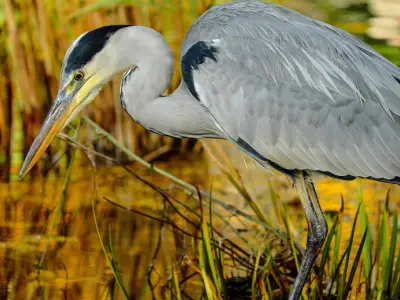What is Ichthyology?
A branch of zoology, ichthyology is the study of fishes. Ichthyologists are specialist marine biologists who study aquatic vertebrate organisms with physiological structures such as gills and scales – marine biology is the study of all living organisms in the ocean, including fishes.
The study of fish has existed as a branch of scientific study since 1500 BCE – a time when hunter-gatherer communities learnt more about fish, such as where to get them, what parts were the most important and what their seasonal availability is.
The modern-day study of fish is a consolidation and expanding record of humanity’s knowledge of various fish species, incorporating new discoveries, archaeological information, and the current extant fish base. The modern ichthyologist will also understand the basic biological requirements that differentiate fish from other vertebrates and the unique composition of their aquatic environments, they’ll also know many, many interesting facts about fish, some of which we’ll share.
Facts About Fish You Probably Didn’t Know
From Goldfish and Koi Carp to the Kissing Gourami by way of the majestic Great White, the study of fish has presented us with some of the most fascinating creatures on our planet. Here are just a handful of quick facts about fish:
- Clownfish can change their sex
- Sockeye Salmon use magnetic fields for navigation
- Hagfish fend off predators with a cloud of slime
- Cookie Cutter Sharks used to reroute nuclear submarines
- Mudskippers can climb trees
With adaptations to some of the harshest environments and evolutions that help them survive and thrive, fish have developed beyond so much more than your average guppy. Let’s delve into the world of ichthyology — the study of fish — to learn more.

Fish have inhabited the earth for the last 450 million years and have been around for longer than the dinosaurs, taking up more habitat than any other group or animal. They are the most diverse group of organisms — having the largest range of body sizes and shapes – from the Dwarf Minnow to the Whale Shark, with more than 30,000 extant species and many more that are extinct. So, as you can imagine, ichthyology, as the study of fish, is extensive.
For this ichthyology introduction, we’ll share 13 of our favourite fascinating facts about fish from the Ichthyology Diploma Course, to whet your appetite.
1. Fish Live In the Harshest Environments on Earth
Different species of fish can withstand temperatures from -2°C to 40°C, residing in extremes all over the world, from Antarctic ice to thermal hot springs. The icefish are particularly fascinating, having evolved to develop crocodile-like heads, bodies without scales, and almost-transparent blood due to a lack of haemoglobin.
2. They Are Beautiful in Their Own Ways
With fish, beauty is very much in the eye of the beholder. While some species such as Siamese Fighting Fish and Koi Carp are beloved by humans for their colourful scales and flowing fins, others are not so gifted in this area. Our facts about fish wouldn’t be complete without mention of the infamous blobfish. Ugly it may be, but these incredible evolutions are what keep this fish surviving and thriving at depths of 2,000 to 4,000 feet. Here, they look like just any other fish but as they get closer to the surface, the pressure starts to decrease, giving this fish its blob-like form.
3. There Are Hermaphroditic Fish
Other species exhibit the reproductive organs of both sexes, producing either an egg or sperm at a time. They do still require cross-fertilisation from another one of their species and 95% of fish species reproduce in external spawning events.
4. Fish Can’t Actually Fly - But Some Can Walk
You’ve probably heard of flying fish. We hate to burst your bubble but our facts about fish must inform you that these fish aren’t actually flying. They have developed impressive pectoral fins that propel and lift them from the water and enable them to flap and glide across the surface. Perhaps more impressive are the terrestrial-based benthic fishes, such as mudfish. They have evolved to become amphibious and rely on jerking movements to transport themselves across the seabed and the land. Some have even been known to climb trees.

5. The Bony-Eared Assfish Is the Least Intelligent Vertebrate Ever
Fish do get a bit of a bad rep for being unintelligent — measured in ichthyology by determining the brain-to-body ratio. Fish have been observed cooperating as groups, using memory effectively to avoid fishing grounds and noting landmarks to orient themselves to the shore. Some fish even use tools to access food and construct shelters.
The unfortunately named bony-eared assfish has the smallest brain-to-body ratio recorded in all vertebrates. Elsewhere, in the world of fish, sharks have a larger brain-to-body ratio, more similar to that of birds.
6. Some Fish Are Bloodsuckers With No Internal Skeletons
Like something you’d find in a horror film, the Agnathan group of fish species have no internal skeletons and are covered in slime to defend themselves against predators. They’re hardly at the bottom of the food chain, though, despite not having armour like their fish ancestors. The last remaining families in this group — hagfish and lamprey Agnatha — sustain themselves by sucking on their prey’s blood with their large, circular mouths.

7. Some Fish Will Sacrifice Their Safety to Find a Mate
You might wonder why certain coral-dwelling fish are so brightly coloured when, as we know from Finding Nemo, predators lurk around almost every corner of the reef. Surely, their brightly patterned bodies make them stand out to would-be killers. And you’d be right. Our facts about fish can tell you that it’s a sacrifice they — mostly males — are willing to make to find a mate. Symmetrical patterns are favoured. Funnily enough, we humans used to think God had painted these fish brightly in order for us to spot and hunt them better ourselves.
8. Deep Sea Fish Actually Glow in the Dark
The study of fish explains that mesopelagic fish, anglerfish and lanternfish live at so great a depth that light cannot penetrate through to their habitat from the surface. Bathypelagic fish, such as the Deep-Sea Angler Fish ,create their own light with bioluminescence. They are famed for a hanging light fixture atop their heads, which they use to attract prey close enough to strike and kill them with their long, sharp fangs.

9. Some Fish Swallow Their Prey Whole and Are Called Gulpers
Yes, you read that correctly. Another of our facts about fish is that while plenty of fish species have evolved to grow specialised teeth for grinding, tearing or gnashing their food, others simply swallow theirs whole with enormous mouths, filter-feeding structures and gill rakers. The Gulper Catfish has even evolved to be able to suck their prey in from afar.
10. Some Fish have Eyes on the Same Side of Their Body
Fish eyes have developed remarkably well to adjust to various environments over the centuries. Flatfish are born with one on each side of their heads but as they grow into adulthood, they metamorphose to look completely different. As they sink into the seabed, where they will remain, one eye moves to join the other on one side of the body and its swim bladder dissolves, unneeded for its new sedentary lifestyle. The four-eyed fish is another remarkable adaptation. These fish live near the surface and have evolved to boast two sets of eyes, one on the sides of the head and one on the top of the head. This enables the fish to see above and below the surface simultaneously.

11. Fish Can Live for Hundreds and Hundreds of Years
The study of fish tells us that, despite occupying some of the harshest environments on the planet, fish have incredible longevity and many species can live for more than 100 years. The oldest living fish species is the Greenland Shark, with an estimated lifespan of over 400 years – the greatest of any vertebrate.
12. There Are More Than 35 Species of Genetically Modified Fish
At the time of writing, commercial food suppliers are genetically modifying fish, including Trout, Catfish, Tilapia, Striped Bass, Flounder, and Salmon to create giant species less prone to disease, bring more food to market and produce bigger profits.
13. Fish Are at Risk of Exploitation and Extinction
Commercial overfishing and climate change have been an unfortunate part of human consumption for hundreds of years. But we are beginning to understand its effects on the habitats and species that keep the delicate balance of our water ecosystems in check. The development of aquaculture - organised fish rearing and farming - has its pros and cons and a better understanding of ichthyology will no doubt give our wild fish a fighting chance of survival. But should climate change continue at its current unnatural rate due to human influence, the chances of saving our seas become even slimmer.

To do so, we must learn to respect the study of fish and thus, the fish that contribute to these glorious ecosystems and biomes. Fish occupy unique and permanent niches in various food webs, including that of humans. The last of our facts about fish: they fill every ecological niche necessary to keep our oceans healthy. From the coral reefs to the depths of the oceans, fish in all their diversity contribute to the building blocks of all life on earth.
At the time of publishing, entering the code LEARNING in the checkout will reduce the price of our Ichthyology Diploma Course to £29.






